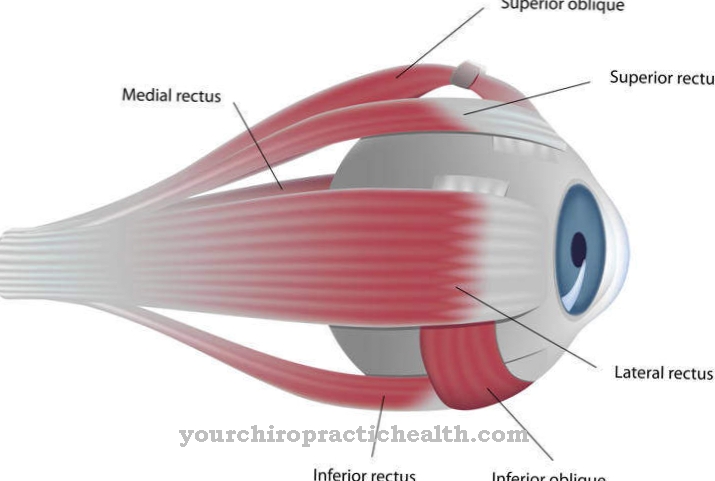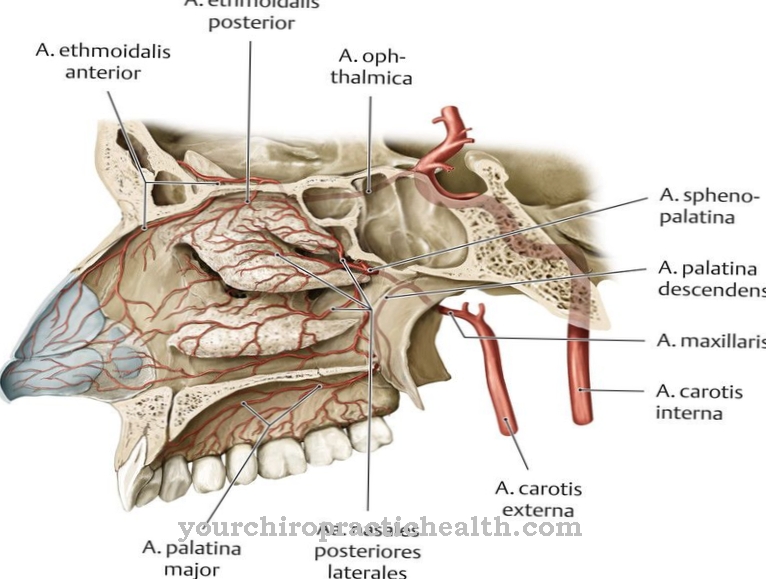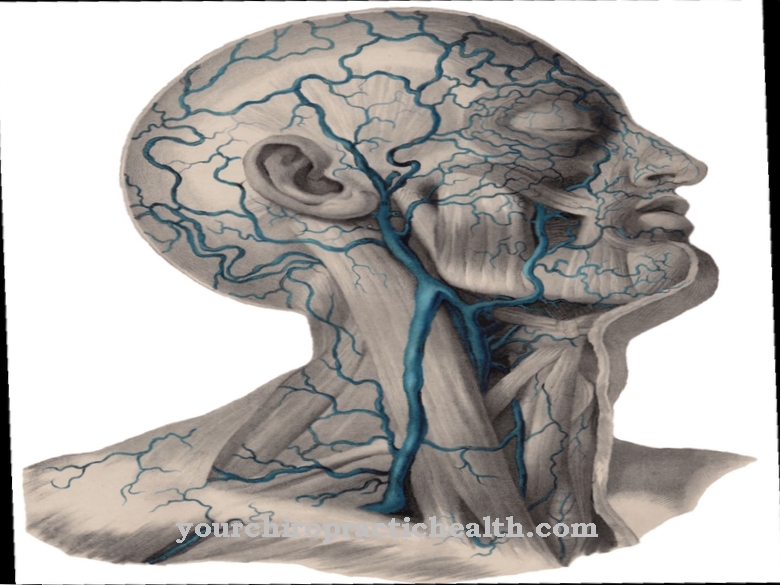The Putamen or the outer lens nucleus is a structure in the brain that belongs to the corpus striatum or nucleus lentiformis. Its task is to process nervous signals that are relevant for the control of motor processes. Damage to the putamen can accordingly be accompanied by disorders of voluntary movements.
What is the putamen?
The putamen is a core area of the brain that contains numerous nerve cell bodies and belongs to the corpus striatum. Together with the caudate nucleus, it thus participates in the control of voluntary movements. Functionally, the putamen is one of the basal ganglia: the motor, limbic and cognitive core areas of the brain.
They do not belong to the pyramidal system, which is also responsible for movement sequences and whose trajectories ascend and descend via the spinal cord. In the brain, however, pyramidal nerve tracts run right next to the putamen through the internal capsule; it also includes numerous other nerve fibers and forms the connection between the cerebral cortex and lower-lying areas such as the cerebral crura (crura cerebri).
The putamen belongs not only to the corpus striatum, but also to the nucleus lentiformis or lens nucleus, the other half of which forms the pallidum. This division is independent of the caudate nucleus - although this forms the other part of the striatum, it does not belong to the lentiform nucleus.
Anatomy & structure
In the cerebrum, the putamen lies symmetrically in both halves (hemispheres). It is located next to the internal capsule, a bowl-shaped collection of many nerve fibers that run through the brain and belong to different functional pathways.
Outwardly, the putamen is adjacent to the pallidum, with which it forms the nucleus lentiformis. The nerve cells within the putamen essentially belong to two specific types: the cholinergic interneurons and the inhibitory projection neurons. In biology, interneurons are nerve cells that represent the connecting link between two other neurons. Cholinergic interneurons use the neurotransmitter acetylcholine to transmit signals.
Projection neurons are also known as main neurons and have longer axons, with the help of which they can also connect brain structures that are not directly adjacent to one another. Since these projection neurons have an inhibitory effect in the putamen, biology also calls them inhibitory projection neurons.
Function & tasks
As a core area, the putamen calculates information from various nerve cells that are interconnected and that the human body ultimately needs to control movements. As usual, the calculation follows the principle of spatial and temporal summation: Within a nerve fiber, neuronal information moves as an electrical signal known as the action potential.
The electrical insulation of the nerve fiber by a myelin layer allows the action potential to spread more quickly. Areas of the brain with many nerve fibers and few cell bodies form the white matter of the brain, while the gray matter is characterized by many cell bodies and a few (myelinated) nerve fibers.
When a nerve fiber hits a cell body, a synapse there forms the transition between the nerve fiber of the previous cell and the body (soma) of the second neuron. The action potential ends at a thickening of the nerve fiber, the so-called end button. Inside there are small bubbles (vesicles) which are filled with molecular messenger substances and which, in response to the electrical stimulus, move out of the vesicles into the space between the terminal button and the nerve cell body. This gap or synaptic gap connects the two nerve cells.
At the opposite end there are receptors in the membrane of the downstream (postsynaptic) neuron, to which the neurotransmitters can dock. Their irritation leads to the opening of ion channels in the membrane and causes a change in the electrical charge of the cell. Exciting neurotransmitters trigger an exciting or excitatory postsynaptic potential (EPSP), while inhibitory synapses lead to an inhibitory postsynaptic potential (IPSP). The cell calculates EPSP and IPSP as a sum, also taking into account the strength of the respective signal.
This signal strength depends first on the number of electrical action potentials in the presynaptic nerve fibers and then on the amount of biochemical neurotransmitters. Only when the sum of all EPSP and IPSP exceeds the critical threshold of the change in charge in the cell body does a new action potential arise on the axon hill of the postsynaptic nerve cell.
You can find your medication here
➔ Medicines against memory disorders and forgetfulnessDiseases
Because of its involvement in movement control, disorders of the putamen can be reflected in the form of motor complaints. In many cases, the putamen is not affected in isolation, but the basal ganglia are often impaired in their overall function under such circumstances.
One example of this is Parkinson's disease: the neurodegenerative disease is based on the decline of the dopaminergic substantia nigra, which leads to a dopamine deficiency. Dopamine acts as a neurotransmitter; its deficiency means that synapses can no longer correctly transmit neural signals between nerve cells. For Parkinson's disease, therefore, the motor symptoms are muscle rigidity (rigidity), muscle tremors (tremor), slowed movements (bradykinesia) or inability to move (akinesia) as well as postural instability.
As part of the treatment, L-Dopa, among other things, can be used, which is a precursor to dopamine and is intended to at least partially compensate for the neurotransmitter deficiency in the brain.
The putamen can also be damaged along with other areas of the brain in the context of Alzheimer's dementia. The most prominent symptom of the disease is amnesia, with short-term memory typically being impaired first and more than long-term memory. It is still unknown what causes the development of Alzheimer's disease; One of the leading theories is based on deposits (plaques) which impair the signal transmission and / or supply of the nerve cells and ultimately lead to their disappearance.












.jpg)



.jpg)










.jpg)
